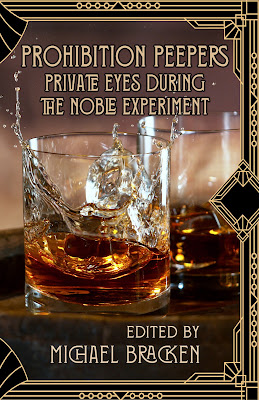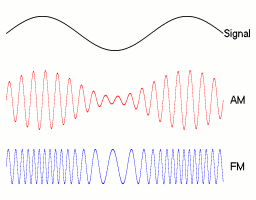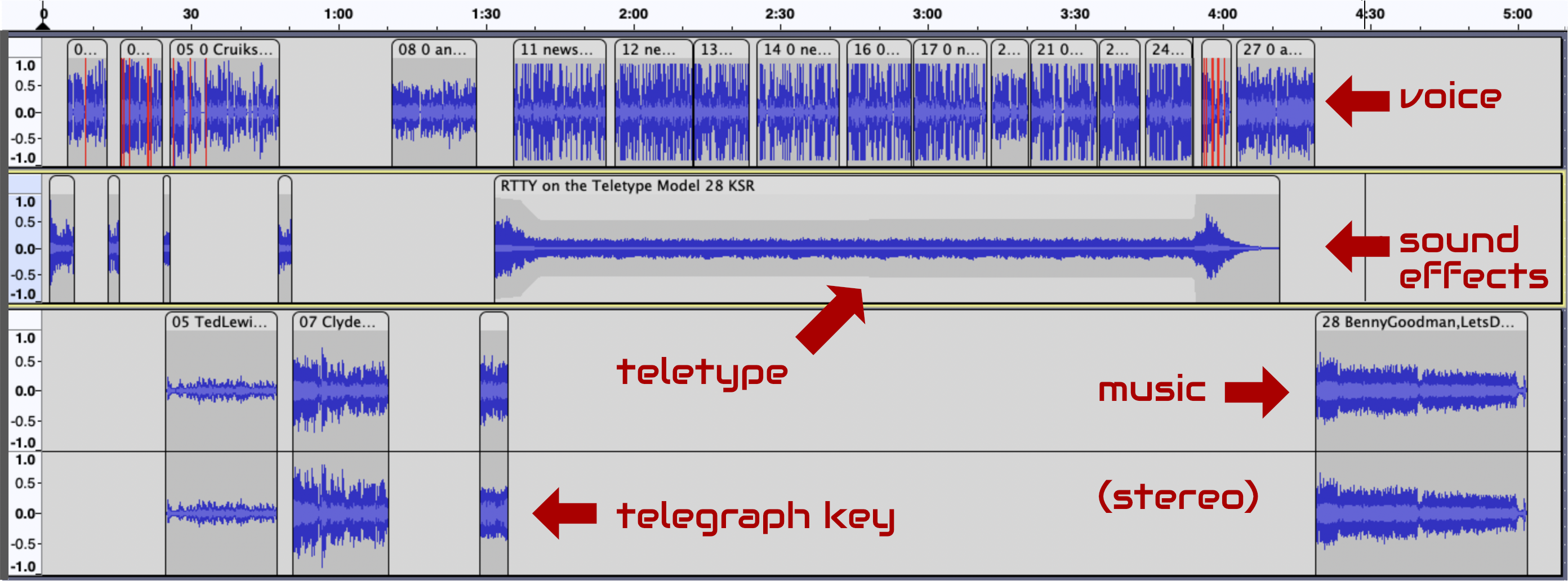 |
| Gorgeous cover! |
Trailer Perq
Last time, I introduced my 12yo detective heroes, Penrod and Sam, taking on Chicago mobsters at the height of Prohibition and the depth of the Great Depression. That article revealed inspirations for characters and the story, one of fourteen tales in Michael Bracken’s Prohibition Peepers. This week I’ll describe how I created the audio for a book trailer (a preview) and next week we’ll discuss the associated video.
I grew up with antique radios and still have a few. I built a crystal radio at age 8, just a few odd parts. Unsurprisingly, radio plays a major role in Dime Detective. Penrod, my little hero, nightly tunes in a homemade crystal radio. That sparked an idea…
Different anthology editors devise different promotions, so I wasn’t sure what Michael might have in mind after Prohibition Peepers hit bookstores. A book trailer by James Lincoln Warren initiated a desire to create a preview for Dime Detective built around an old-time radio broadcast. Like many solitary writers, I’m used to doing things on my own, but the anthology is Michael’s project and we had another dozen contributors to consider.
We sent out a request for participants with stories fitting the time and place of Chicago 1932. With a half dozen participants and their stories, I mapped out a script centered around a newscast.
| © 2023 Prohibition Peepers |
||
We begin with homage to early radio, tuning in a half million watt Mexican ‘X-band’ border station, a radio evangelist (with hints that a listener has a romantic interest), and a patent medicine ad, before launching into a Clyde McCoy rouser. McCoy is considered the inventor of the wah-wah mute, a technique imitated by electric guitarists.
The nightly news intersperses fictional and factual items. The Chicago Bears playoffs must have been one hell of a game, one that set the stage for the Super Bowl, as hinted by the commissioner.
Items that didn’t fit the December 1932 Chicago setting I cast as wire stories, a historical reflection, or an ad. For the same reason, Penny Mickelbury led sports with an advertisement, a break from the rapid string of news.
The schematic following the newscast accurately depicts a real, operational crystal circuit. The video ends in a reversal of how it began, culminating with Benny Goodman playing through the credits.
How It’s Done
I’m a rank amateur when it comes to videos and some decisions reflect that. One example: Would recording the news in one or two long continuous takes be preferable to recording each segment separately? A single take could provide simplicity and consistency in sound quality, but I chose to manage about two dozen segments separately. It gave me more flexibility in article arrangement and sound effects.
But I made mistakes. I deliberately purchased an inexpensive microphone. Duh, you might say, you get what you pay for… but not what I hoped for. Early microphones suffered tinny, attenuated audio ranges and I was seeking that sound. Instead, the surprisingly solidly made cheap mic didn’t attenuate as hoped but merely responded dully. I bought a Snowball, which exhibited excellent range for the price and I thinned the voice by restricting frequency range after recording.
Macintoshes ship with iMovie video and Garage Band audio programs. Although most Mac users prefer Garage Band, I opted for Audacity. I had experience with the program, plus it’s cross-platform if for some reason Windows became a factor. I didn’t entirely abandon Garage Band; as mentioned a moment ago, I created the tinny newscaster effect by tweaking Garage Band’s ’telephone’ filter.
Back on Track
In Audacity, I laid out three sets of tracks, two monaural tracks for voice and sound effects, and a pair of stereo tracks for music. The project didn’t require stereo, but imported sound came in stereo and I left it.
I edited three musical segments.
| Sunny Side of the Street | Ted Lewis |
| Sugar Boogie | Clyde McCoy |
| Let's Dance | Benny Goodman |
Listening to the trailer, you may easily miss ‘On the Sunny Side of the Street’. It plays quietly in the background of Dr Cruikshank’s breathy advert.
To give the illusion of complete songs, I edited out the middles of Sugar Boogie and Let’s Dance, reducing the pieces to 20 seconds and 45 seconds respectively.
Noise
Static, tuning sounds, and a teletype constitute primary sound effects. A telegraph key beep-beeps in the introduction of the news that overlaps the telex. The music track quiesced emptily at that point, so I placed the Morse clip there, allowing me to maintain it separately without adding a track.
During my consulting career, I communicated by telex to offices in Europe. That oddly hypnotic clatter stuck in my head. I entered the project wanting to match that distinct teletype sound in my ears.
Dozens of ‘TTY’ clips were available on the internet, but that particular tone eluded me except for one YouTube video in which the owner incessantly talked all the way through it. And talked. And talked. I wanted to scream, “STFU!” which in Bulgarian means, “Please be quiet.”
Listening to the clip a few more times, I found a little less than 15 seconds where he actually fell silent. I captured those few seconds and replicated them several times for my purposes. The resulting teletype runs in the background under the news reader.
Voices in Secret
I’d planned for a professional stage presenter to handle the ballroom announcer, but he was on vacation in Europe and, unfortunately, he didn’t return in time to complete his part. Michael called time. He said, “Go with what you got, Sparky.” I’m pretty sure he said that.
Here’s a secret: I had created vocal placeholders with Macintosh-generated voices. In fact, Mac text-to-speech appears throughout, and I admit a couple I considerably liked. I wasn’t as keen about the big band ballroom voice, but without a professional announcer, we went digital.
Audacity blended all the clips together. Michael and the gang approved the audio draft, but then what? Next week: I inveigle the video.
Before departing today, I’ve created a timeline and jotted notes of our hearty pioneers settling the Great Plains and the role of radio in that lonely landscape. A bit backward, yes, but feel free to skip.
 |
| AM + FM radio modulation |
Imagine.
Put yourself in the mind of a turn-of-the-century farmer in the vast West and Midwest. Your nearest neighbor might lie ten miles distant or thirty or more. The closest city could easily be 200 or more miles away in America’s huge heartland.
Working the land in isolation grows numbing, especially for a bride with no one to talk to. Few of us can fathom the loneliness of those hearty pioneers, the devastation of the Dust Bowl and the Great Depression. Bibles aren’t enough. Magazines and mail-order lending libraries become all-important links with the rest of the world. And then…
| date | audio timeline | |
|---|---|---|
| 1888 | H.R. Hertz: radio waves through ether | |
| 1894 | G. Marconi: transmitters and receivers | |
| 1895 | N. Tesla experiments with radio waves | |
| 1900 | R. Fessenden: voice transmission | |
| 1900 | R.L. de Moura: voice transmission | |
| 1906 | Lee de Forest develops AM prototypes | |
| 1920 | Detroit, first radio newscast | |
| 1920 | Wendell King, 1st college station | |
| 1922 | US Gov offers how-to-build radio booklet | |
| 1922 | WLW debuts, later licensed for 500,000w | |
| 1927 | first English radio stations in Mexico | |
| 1930 | XED first border blaster station | |
| 1932 | XER quack Dr John R. Brinkley’s station | |
| 1932 | X-stations now half and full-million watts | |
| 1933 | E.H. Armstrong patents FM radio |
Perhaps your son finds a radio hobbyist magazine. He collects a few scraps, buys a cheap headphone, and holds it to your ear. Music, oh sweet Lord, music, hymns and classical and… what? This new music? The Lindy Hop, Naptown Stomp, and the Charleston?
He’s built a crystal set, which seems magical because “it runs on nothing, forever.” In the 1880s, smart scientists and engineers figured out how to transmit sound through invisible ‘ether’, the airwaves. You can’t touch it, taste it, or see it, but you can hear it. Truly, it’s magic.
Back to our family on the Great Plains, eventually husband buys a ‘real’ radio with a battery or maybe an electrical plug. In the evening, your family gathers around listening to news, advertisements for quack medicines, religious broadcasts, and wonderful big band broadcasts from hotel ballrooms. Life has become a little easier.



Wow, this is really impressive, Leigh! Congratulations on a job beautifully done — and explained!
ReplyDeleteThanks, Josh. I appreciate it. My dad would have liked the old radio theme.
DeleteH Leigh. This is Michael’s wife, Temple. Just wanted to say I love it!!! Weaving in author names was a fun touch.
ReplyDeleteThanks, Temple. I enjoyed figuring out ways to fit the creations of others into the requisite time and space. By the way, Michael has talked (bragged he did!) so much about you, we've all become Temple fans.
DeleteWow! This is fabulous! I can just imagine the hours it took to create, a labour of love, one I thoroughly enjoyed! Thank you for sharing.
ReplyDeleteYou're right, Karen. It took a lot of work but I thoroughly liked it too. I'm pleased you enjoyed it as well.
DeleteFascinating, Leigh. And the end product speaks for itself, a real gem. I love it.
ReplyDeleteI'm glad, Steve. I approached you first and fitting in your story became the model for everyone else's. Wire services are amazing! Thanks, Steve.
DeleteExcellent video. Congratulations on your project.
ReplyDeleteThank you, RT. I owe a lot to Ken Burns– iMovie even names their default transition effect after him!
DeleteI am TREMENDOUSLY impressed!
ReplyDeleteThank you, Eve. I'm basking in your high praise!
DeleteIngenious!
ReplyDeleteThank you, Bob. What's the saying about percentages of inspiration and perspiration? But it was fun, too.
DeleteWhoa! Leigh, this is fantastic. And thanks for working my story in. The whole thing sounds--and looks--great!
ReplyDeleteJohn, thanks. Your character never made it to Chicago, but she's pretty happy where she wound up. And what a fantastic setting. If I make it back to Jackson one day, I'm begging for a tour.
ReplyDeleteThis comment has been removed by a blog administrator.
ReplyDelete